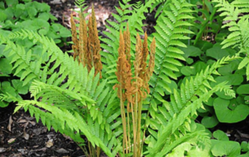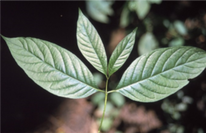FLORA
Why are plants important to vernal pools? While we often focus on the amphibians and macroinvertebrates of vernal pools, the plants are easily as important to the health and diversity of these wetlands. Plants provide structure and habitat for wildlife. Structure provides hiding places, areas to lay eggs, surfaces for other things to grow adding to the complexity of life forms present. Plants help to regulate pool temperature. Most of Ohio’s vernal pools are forested with a tree canopy that shades the forest floor keeping it cooler longer than more exposed locations. Plants also affect wetland hydrology. The hydrology is the length of time, the occurrence and movement of water, the physical and chemical properties of water, and its relationship with the living and material components of the environment. Plants remove water from the soil add it to their tissue as they grow and send much of it on its way through leaf tissue into the atmosphere in a process called evapotranspiration. With leaf growth in the spring the water of vernal pools begins to draw down.
Plants may serve as an indicator of wetland type and quality. An experienced wetland botanist can read the plant community to learn a great deal about the area. High quality plants may indicate that hydrology is undisturbed, or that human impacts (sediment deposition, nutrient enrichment, plant removal, etc.) have been minimal. Specialist plants are indicative of high-quality, intact systems. Some, such as Skunk Cabbage, require cool flowing groundwater, a groundwater seep to become established and to thrive.
Knowing the plant community of vernal pools will give you a better understanding of the health and diversity of the ecosystem. With experience you can assess the initial quality of a vernal pool just as you approach it. Reading the trees, shrubs and herbaceous plants can tell you many things even before you get closer and look beneath the surface for more of its hidden wonders.
Plants may serve as an indicator of wetland type and quality. An experienced wetland botanist can read the plant community to learn a great deal about the area. High quality plants may indicate that hydrology is undisturbed, or that human impacts (sediment deposition, nutrient enrichment, plant removal, etc.) have been minimal. Specialist plants are indicative of high-quality, intact systems. Some, such as Skunk Cabbage, require cool flowing groundwater, a groundwater seep to become established and to thrive.
Knowing the plant community of vernal pools will give you a better understanding of the health and diversity of the ecosystem. With experience you can assess the initial quality of a vernal pool just as you approach it. Reading the trees, shrubs and herbaceous plants can tell you many things even before you get closer and look beneath the surface for more of its hidden wonders.
A short list of some common plants found in or around vernal pools
Trees
American Elm - Ulmus americana
Green Ash - Fraxinus pennsylvanica
Red Maple - Acer rubrum
Silver Maple - Acer saccharinum
Pin Oak - Quercus palustris
Swamp White Oak - Quercus bicolor
Forbs
(Flowering, non-woody plants)
Small-flowered Agrimony - Agrimonia parviflora
False Nettle - Boehmeria cylindrica
Jewelweed - Impatiens capensis
Fringed Loosestrife - Lysimachia ciliata
Golden Ragwort - Senecio aureus
Marsh Marigold - Caltha palustris
Skunk Cabbage - Symplocarpus foetidus
Shrubs
Buttonbush - Cephalanthus occidentalis
Spicebush - Lindera benzoin
Ferns
Sensitive Fern - Onoclea sensibilis
Cinnamon Fern - Osmunda cinnamomea
Royal Fern - Osmunda regalis
Graminoids
(Grass-like, non-woody plants)
Brome Sedge - Carex bromoides
Gray’s Sedge - Carex grayi
Hop Sedge - Carex lupulina
Squarrose Sedge - Carex squarrosa
Fowl Mannagrass - Glyceria striata
Sweet Woodreed Grass - Cinna arundinacea
White Grass - Leersia virginica
Trees
American Elm - Ulmus americana
Green Ash - Fraxinus pennsylvanica
Red Maple - Acer rubrum
Silver Maple - Acer saccharinum
Pin Oak - Quercus palustris
Swamp White Oak - Quercus bicolor
Forbs
(Flowering, non-woody plants)
Small-flowered Agrimony - Agrimonia parviflora
False Nettle - Boehmeria cylindrica
Jewelweed - Impatiens capensis
Fringed Loosestrife - Lysimachia ciliata
Golden Ragwort - Senecio aureus
Marsh Marigold - Caltha palustris
Skunk Cabbage - Symplocarpus foetidus
Shrubs
Buttonbush - Cephalanthus occidentalis
Spicebush - Lindera benzoin
Ferns
Sensitive Fern - Onoclea sensibilis
Cinnamon Fern - Osmunda cinnamomea
Royal Fern - Osmunda regalis
Graminoids
(Grass-like, non-woody plants)
Brome Sedge - Carex bromoides
Gray’s Sedge - Carex grayi
Hop Sedge - Carex lupulina
Squarrose Sedge - Carex squarrosa
Fowl Mannagrass - Glyceria striata
Sweet Woodreed Grass - Cinna arundinacea
White Grass - Leersia virginica







